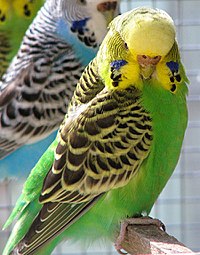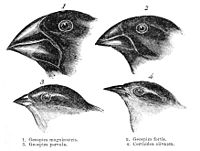
Sharks as exfoliators: widespread chafing between marine organisms suggests an unexplored ecological role.
Sign Up to like & getrecommendations! Published in 2021 at "Ecology"
DOI: 10.1002/ecy.3570
Abstract: Ectosymbionts, such as bacteria and parasites, are found on the surface of organisms throughout the world's ecosystems. Hosts have evolved a variety of mechanisms across ecosystems to rid themselves of ectoparasites or other skin irritants… read more here.
Keywords: widespread chafing; chafing marine; sharks exfoliators; exfoliators widespread ... See more keywords

Different Approaches to Discover Mycovirus Associated to Marine Organisms.
Sign Up to like & getrecommendations! Published in 2018 at "Methods in molecular biology"
DOI: 10.1007/978-1-4939-7683-6_8
Abstract: Here we describe the protocols to characterize the virome associated to fungi isolated from marine organisms assessed on the seagrass Posidonia oceanica and on the marine animal Holothuria poli. We provide detailed protocols for fungal… read more here.
Keywords: mycovirus associated; discover mycovirus; associated marine; marine organisms ... See more keywords

Metabolomics on the study of marine organisms
Sign Up to like & getrecommendations! Published in 2022 at "Metabolomics"
DOI: 10.1007/s11306-022-01874-y
Abstract: Background Marine ecosystems are hosts to a vast array of organisms, being among the most richly biodiverse locations on the planet. The study of these ecosystems is very important, as they are not only a… read more here.
Keywords: marine organisms; use metabolomics; study marine; metabolomics study ... See more keywords

Effect of the blue pigment produced by the tropical diatom Haslea nusantara on marine organisms from different trophic levels and its bioactivity
Sign Up to like & getrecommendations! Published in 2020 at "Aquaculture Reports"
DOI: 10.1016/j.aqrep.2020.100389
Abstract: Abstract Marennine is the blue-green pigment produced by the temperate ubiquiste marine diatom Haslea ostrearia. This pigment is water-soluble and excreted in seawater during H. ostrearia growth and ageing. Previous studies demonstrated the adverse effects… read more here.
Keywords: bioactivity; diatom; pigment; pigment produced ... See more keywords

Occurrence and effects of plastic additives on marine environments and organisms: A review.
Sign Up to like & getrecommendations! Published in 2017 at "Chemosphere"
DOI: 10.1016/j.chemosphere.2017.05.096
Abstract: Plastics debris, especially microplastics, have been found worldwide in all marine compartments. Much research has been carried out on adsorbed pollutants on plastic pieces and hydrophobic organic compounds (HOC) associated with microplastics. However, only a… read more here.
Keywords: occurrence effects; marine environments; marine organisms; additives marine ... See more keywords

Tetrabromobisphenol A inhibits carboxylesterase activity of marine organisms from different trophic levels.
Sign Up to like & getrecommendations! Published in 2019 at "Chemosphere"
DOI: 10.1016/j.chemosphere.2019.124592
Abstract: Tetrabromobisphenol A (TBBPA), a brominated flame retardant used in synthetic polymers and electronics, is present in the aquatic environment and recent evidence suggests it can be potentially biomagnified in the marine ecosystem. However, the toxicity… read more here.
Keywords: inhibits carboxylesterase; tetrabromobisphenol inhibits; trophic levels; marine organisms ... See more keywords

Bioaccumulation and trophic magnification of short chain chlorinated paraffins in marine organisms from East China Sea.
Sign Up to like & getrecommendations! Published in 2021 at "Marine pollution bulletin"
DOI: 10.1016/j.marpolbul.2021.113049
Abstract: As new persistent organic pollutants, short chain chlorinated paraffins (SCCPs) have recently received particular attention. However, knowledge on their bioaccumulation and trophic magnification in marine organisms from East China Sea (ECS) is still scare. In… read more here.
Keywords: bioaccumulation trophic; marine organisms; trophic magnification; east china ... See more keywords

Anticancer and cancer preventive compounds from edible marine organisms.
Sign Up to like & getrecommendations! Published in 2017 at "Seminars in cancer biology"
DOI: 10.1016/j.semcancer.2017.03.011
Abstract: A direct impact of food on health, which demonstrates that dietary habit is one of the most important determinants of chronic diseases such as cancers, has led to an increased interest of the consumers toward… read more here.
Keywords: marine organisms; cancer preventive; anticancer cancer; edible marine ... See more keywords

Detection of microplastics in local marine organisms using a multi-technology system
Sign Up to like & getrecommendations! Published in 2019 at "Analytical Methods"
DOI: 10.1039/c8ay01974f
Abstract: Microplastics with complex polymer compositions are present in a lot of local marine organisms. read more here.
Keywords: organisms using; microplastics local; local marine; detection microplastics ... See more keywords

Marine organisms as potential sources of natural products for the prevention and treatment of malaria
Sign Up to like & getrecommendations! Published in 2023 at "RSC Advances"
DOI: 10.1039/d2ra07977a
Abstract: Vector-borne diseases (VBDs) are a worldwide critical concern accounting for 17% of the estimated global burden of all infectious diseases in 2020. Despite the various medicines available for the management, the deadliest VBD malaria, caused… read more here.
Keywords: organisms potential; sources natural; natural products; marine organisms ... See more keywords

Evolutionary responses of marine organisms to urbanized seascapes
Sign Up to like & getrecommendations! Published in 2021 at "Evolutionary Applications"
DOI: 10.1111/eva.13048
Abstract: Many of the world's major cities are located in coastal zones, resulting in urban and industrial impacts on adjacent marine ecosystems. These pressures, which include pollutants, sewage, runoff and debris, temperature increases, hardened shorelines/structures, and… read more here.
Keywords: responses marine; evolutionary responses; genetic diversity; organisms urbanized ... See more keywords